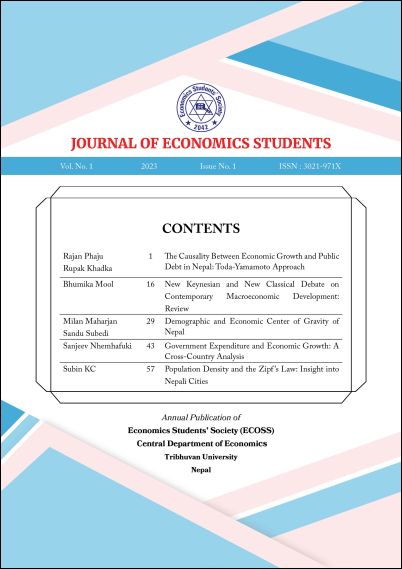The Causality between Economic Growth and Public Debt in Nepal: Toda-Yamamoto Approach
DOI:
https://doi.org/10.3126/joess.v1i1.65688Keywords:
Real GDP, foreign debt, domestic debt, foreign currency reserve, Toda-Yamamoto approachAbstract
This research paper investigated the causality between economic growth and public debt in Nepal using the time series data from 1975 to 2020. The study applies the Granger non-causality procedure developed by Toda and Yamamoto in a vector autoregression (VAR) model. Variables are real GDP, foreign debt, domestic debt and foreign currency reserve. The empirical results point out that one-way Granger causality running from real gross domestic product to domestic debt whereas foreign debt cannot be caused by all three variables. Similarly, foreign currency reserve also cannot be caused by all three variables. No causality between foreign currency reserve and domestic debt is found. Surprisingly internal debt cannot affect real gross domestic product. This result reveals that rather one-way Granger causality running from foreign currency reserve and foreign debt to real gross domestic product for the mentioned time period. No unidirectional causality among the variables was found in the result. The policymakers should take into consideration of this conclusion and should adopt more structural reforms to collection of domestic debt.
Downloads
Downloads
Published
How to Cite
Issue
Section
License
Copyright (c) 2023 The Author(s)

This work is licensed under a Creative Commons Attribution 4.0 International License.
This license enables reusers to distribute, remix, adapt, and build upon the material in any medium or format, so long as attribution is given to the creator. The license allows for commercial use.




